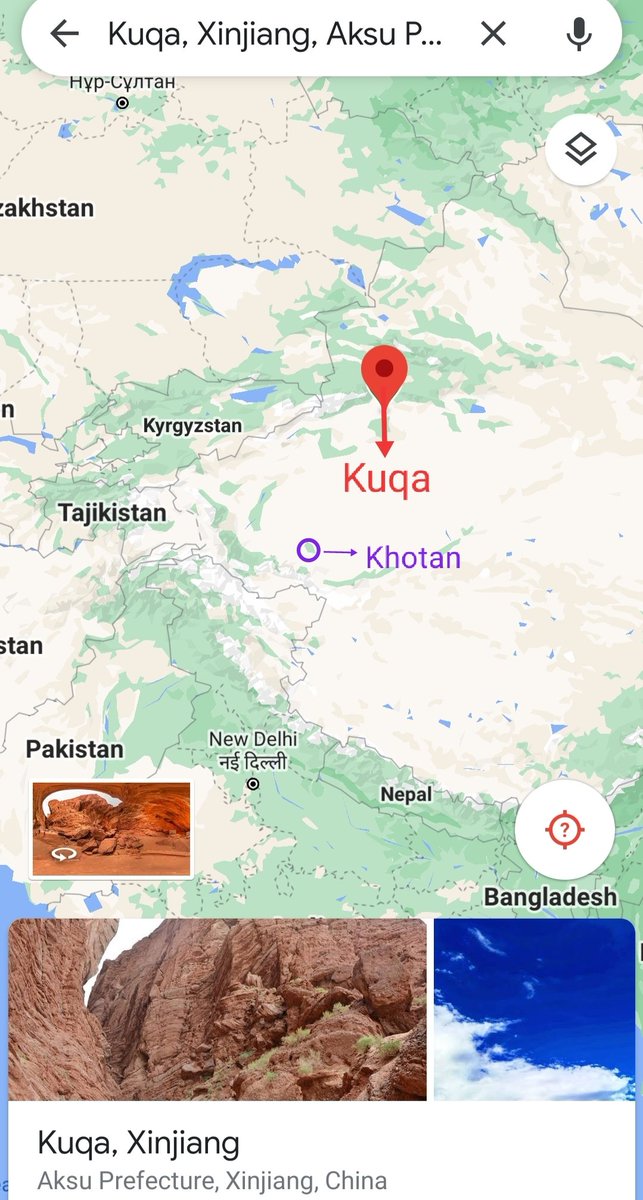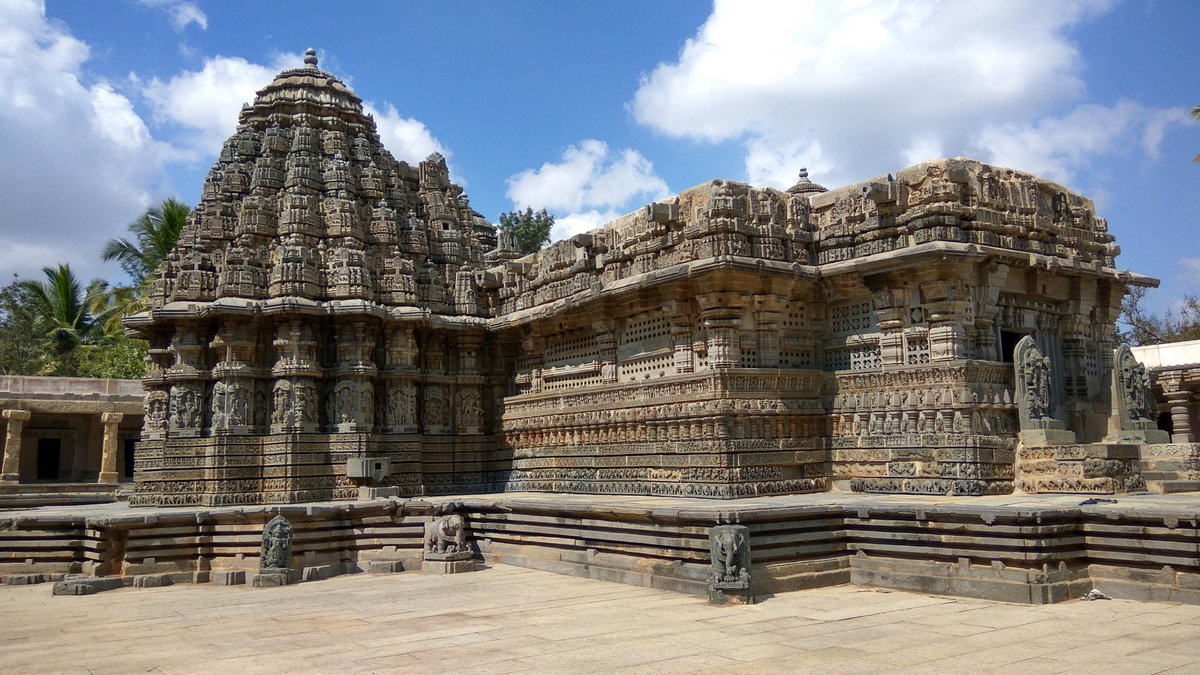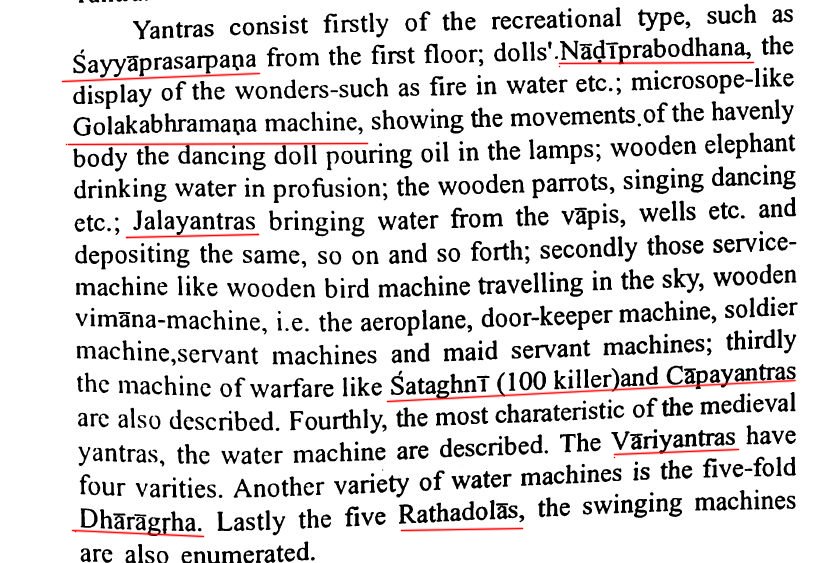Aurel Stein, the british archaeologist who excavated sites around (K)hotan once remarked he could have easily mistaken these sites for those in Punjab & Haryana, the very heart of Vedic civilization. Such was the influence of Bharat over the Xinjiang area. Completely Indianized. 
https://twitter.com/subhash_kak/status/1310763850527014918

Khotan was once ruled by Indianized kings who gave themselves titles similar to the ones of classical Bharat. An inscription found at Khotan refers to Vijita Simha, ruler of Khotan who gave himself the title of Maha Rajatiraja Deva. Prakrit was widely used in Khotan. 

Kuqa, a town on the northern edge of the taklamakan desert, around 700 kms north of Khotan used to be ruled by kings whose names were heavily Sanskritized. Suvarnapushapa, Haripushpa, Haradeva were some of the kings who ruled this area. This place is over 1000 kms away from Leh 



Around 350 kms to the east of Kuqa lies the city of present day Karasahr(Qara Shahr).It once used to be called Agnidesha & was ruled by kings whose names were Indrarjuna, Chandrarjuna
Basically every single settlement around the taklamakan desert was heavily influenced by Bharat
Basically every single settlement around the taklamakan desert was heavily influenced by Bharat

Kuchi was also where Indian music thrived. Inscriptions record a set of Brahmin musicians who settled down in Kuchi
Also note in the last line how Kuchi & China are referred to as seperate entities.
Historically speaking, India has more claim over Xinjiang than Hans ever did.
Also note in the last line how Kuchi & China are referred to as seperate entities.
Historically speaking, India has more claim over Xinjiang than Hans ever did.

Source of all the above info : 3 different books by RC Majumdar. Advanced history of India, The age of imperial unity, The classical age.
• • •
Missing some Tweet in this thread? You can try to
force a refresh






























